Drives
RAID
About RAID
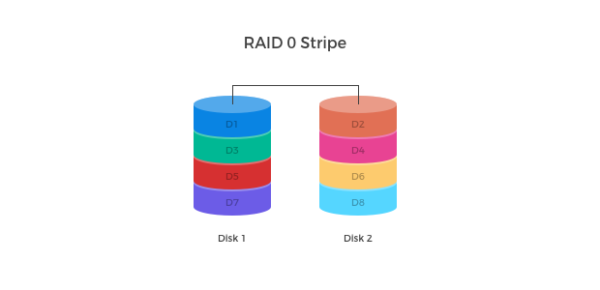
RAID 0 splits data across drives, resulting in higher data throughput. The performance of this configuration is extremely high, but a loss of any drive in the array will result in data loss. This level is commonly referred to as striping.
Minimum number of drives required: 2
Performance: High
Redundancy: Low
Efficiency: High
Advantages:
- High performance
- Easy to implement
- Highly efficient (no parity overhead)
Disadvantages:
- No redundancy
- Limited business use cases due to no fault tolerance
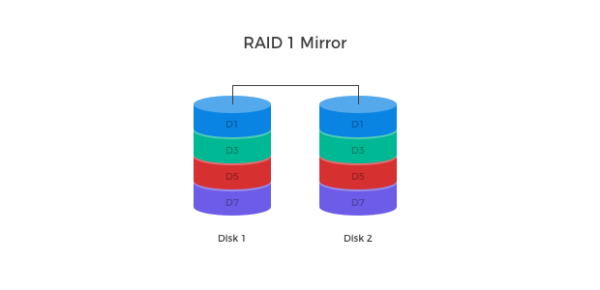
RAID 1 writes all data to two or more drives for 100% redundancy: if either drive fails, no data is lost. Compared to a single drive, this mode tends to be faster on reads, slower on writes. This is a good entry-level redundant configuration. However, since an entire drive is a duplicate, the cost per megabyte is high. This is commonly referred to as mirroring.
Minimum number of drives required: 2
Performance: Average
Redundancy: High
Efficiency: Low
Advantages:
- Fault tolerant
- Easy to recover data in case of drive failure
- Easy to implement
Disadvantages:
- Highly inefficient (100% parity overhead)
- Not scalable (becomes very costly as number of disks increase)
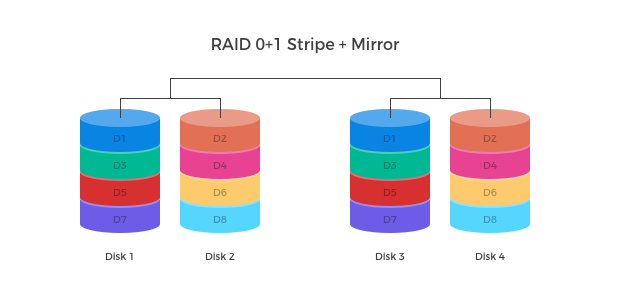
RAID 0+1 is a mirror (RAID 1) array whose segments are striped (RAID 0) arrays. This configuration combines the security of RAID 1 with an extra performance boost from the RAID 0 striping.
Minimum number of drives required: 4
Performance: Very High
Redundancy: High
Efficiency: Low
Advantages:
- Fault tolerance
- Very high performance
Disadvantages:
- Expensive
- High Overhead
- Very limited scalability
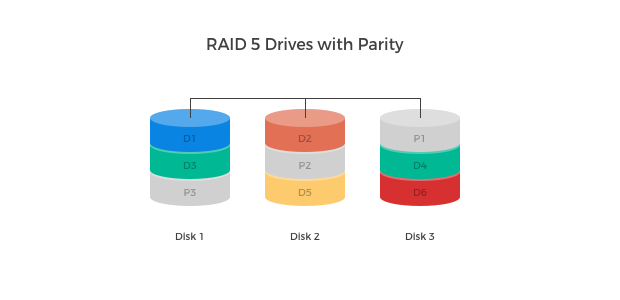
RAID 5 stripes data at a block level across several drives, with parity equality distributed among the drives. The parity information allows recovery from the failure of any single drive. Write performance is rather quick, but because parity data must be skipped on each drive during reads, reads are slower. The low ratio of parity to data means low redundancy overhead.
Minimum number of drives required: 3
Performance: Average
Redundancy: High
Efficiency: High
Advantages:
- Fault tolerant
- High efficiency
Disadvantages:
- Disk failure has a medium impact on throughput
- Complex controller design
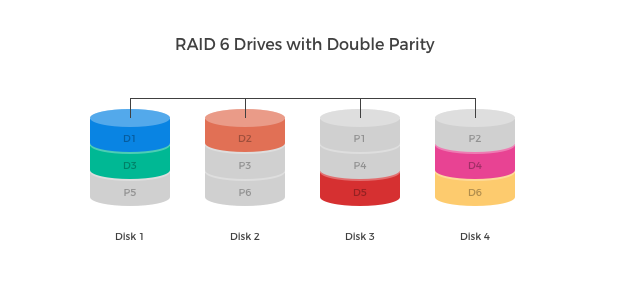
RAID 6 is an upgrade from 5: data is striped at a block level across several drives with double parity distributed among the drives. Parity information allows recovery from the failure of any single drive. The double parity gives this RAID mode additional redundancy at the cost of lower write performance (read performance is the same), and redundancy overhead remains low.
Minimum number of drives required: 4
Performance: Average
Redundancy: High
Efficiency: High
Advantages:
- Fault tolerant with increased redundancy
- High efficiency
- Remains a great option in multi-user environments that are not write performance sensitive
Disadvantages:
- Write performance penalty vs 5
- More expensive than 5
- Disk failure has a medium impact on throughput
- Complex controller design
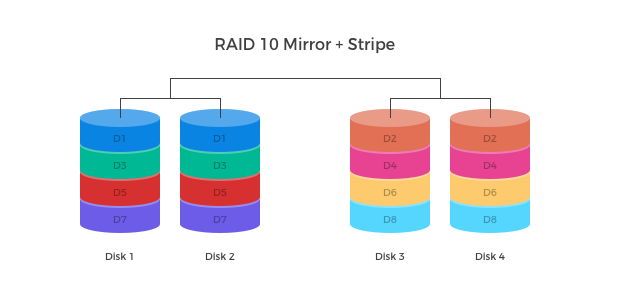
RAID 10 is a striped (RAID 0) array whose segments are mirrored (RAID 1). This mode is a popular configuration for environments where high performance and security are required. In terms of performance, it is similar to RAID 0+1. However, it has superior fault tolerance and rebuilds performance.
Minimum number of drives required: 4
Performance: Very High
Redundancy: Very High
Efficiency: Low
Advantages:
- Extremely high fault tolerance (under certain circumstances, RAID 10 array can sustain multiple simultaneous drive failures)
- Very high performance
- Faster rebuild performance than 0+1
Disadvantages:
- Very Expensive
- High Overhead
- Limited scalability
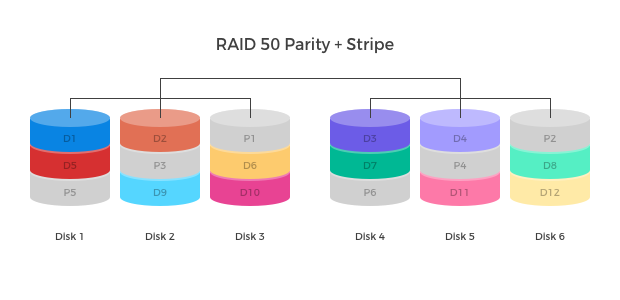
RAID 50 combines parity of 5 and stripes it as in a 0 configuration. Although high in cost and complexity, performance and fault tolerance are superior to 5.
Minimum number of drives required: 6
Performance: High
Redundancy: High
Efficiency: Average
Advantages:
- Higher fault tolerance, better performance and higher efficiency than RAID 5
Disadvantages:
- Very Expensive
- High Overhead
- Limited scalability
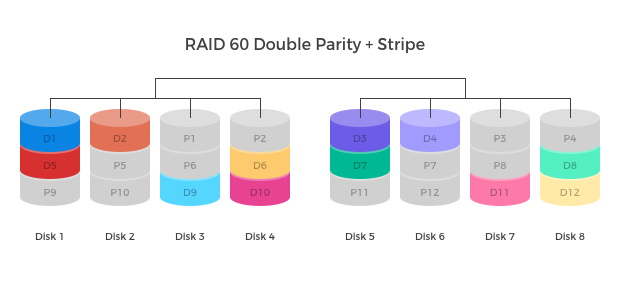
RAID 60 combines double parity of 6 and stripes it as in a 0 configuration. Although high in cost and complexity, performance and fault tolerance are superior to 6.
Minimum number of drives required: 8
Performance: High
Redundancy: High
Efficiency: Average
Advantages:
- Higher fault tolerance than RAID 6
- Higher performance than RAID 6
- Higher efficiency than RAID 6
Disadvantages:
- Very Expensive
- Very complex / difficult to implement